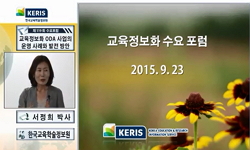The purpose of this study is to investigate the decision of the priority partner countries-in the process of international development cooperation project―on the selection of gender equality aid field. Thus far, the gender equality budget of the rec...
http://chineseinput.net/에서 pinyin(병음)방식으로 중국어를 변환할 수 있습니다.
변환된 중국어를 복사하여 사용하시면 됩니다.
- 中文 을 입력하시려면 zhongwen을 입력하시고 space를누르시면됩니다.
- 北京 을 입력하시려면 beijing을 입력하시고 space를 누르시면 됩니다.

젠더 특성기반 ODA 협력국 선정에 관한 연구 = The Selection of the Partner Countries based on Gender Characteristics
한글로보기https://www.riss.kr/link?id=A105616603
- 저자
- 발행기관
- 학술지명
- 권호사항
-
발행연도
2018
-
작성언어
-
-
주제어
국제개발 협력 ; 중점협력국 ; 젠더 특성 접근법 ; 수원국 ; IPA 분석 ; ODA ; Focus Recipient ; Gender Characteristics Approach ; IPA
-
KDC
300
-
등재정보
KCI등재
-
자료형태
학술저널
-
수록면
91-115(25쪽)
- DOI식별코드
- 제공처
-
0
상세조회 -
0
다운로드
부가정보
다국어 초록 (Multilingual Abstract)
The purpose of this study is to investigate the decision of the priority partner countries-in the process of international development cooperation project―on the selection of gender equality aid field. Thus far, the gender equality budget of the recipient country has been appropriated based solely on the political intention of the donors. We have analyzed 88 countries and 19 key partner countries that could collect data on gender characteristics and corruption index. Through previous research, the countries have been divided into four types: countries with low GGI and high CPI are priority partners; countries with high GGI and low CPI are potential partners; countries with high GGI and high CPI are sustainable countries; countries with low GGI and low CPI are countries of lowly ranked cooperating countries. Analyzed result suggests the gender gap was high in both the recipient country and partner countries, especially in the political sphere. Moreover, the corruption perception index (transparency index) was remarkably low. However, compared to those of all recipient countries, priority partner countries’ gender gap index was relatively low and the corruption perception index was relatively high.
동일학술지(권/호) 다른 논문
-
소득수준과 삶의 만족도와의 관계 분석 : 이항로짓분석의 활용
- 한국자치행정학회
- 최영출 ( Choi Young-chool )
- 2018
- KCI등재
-
조직몰입에 대한 일자리 만족의 영향 - 경로분석을 중심으로 -
- 한국자치행정학회
- 배병룡 ( Bae Byung-ryong )
- 2018
- KCI등재
-
- 한국자치행정학회
- 이병렬 ( Lee Byung-ryul )
- 2018
- KCI등재
-
공공조직의 사회적 자본이 조직성과에 미치는 영향 - 조직구조의 조절효과 중심으로 -
- 한국자치행정학회
- 안성수 ( Ahn Sung-soo )
- 2018
- KCI등재





 KCI
KCI eArticle
eArticle






